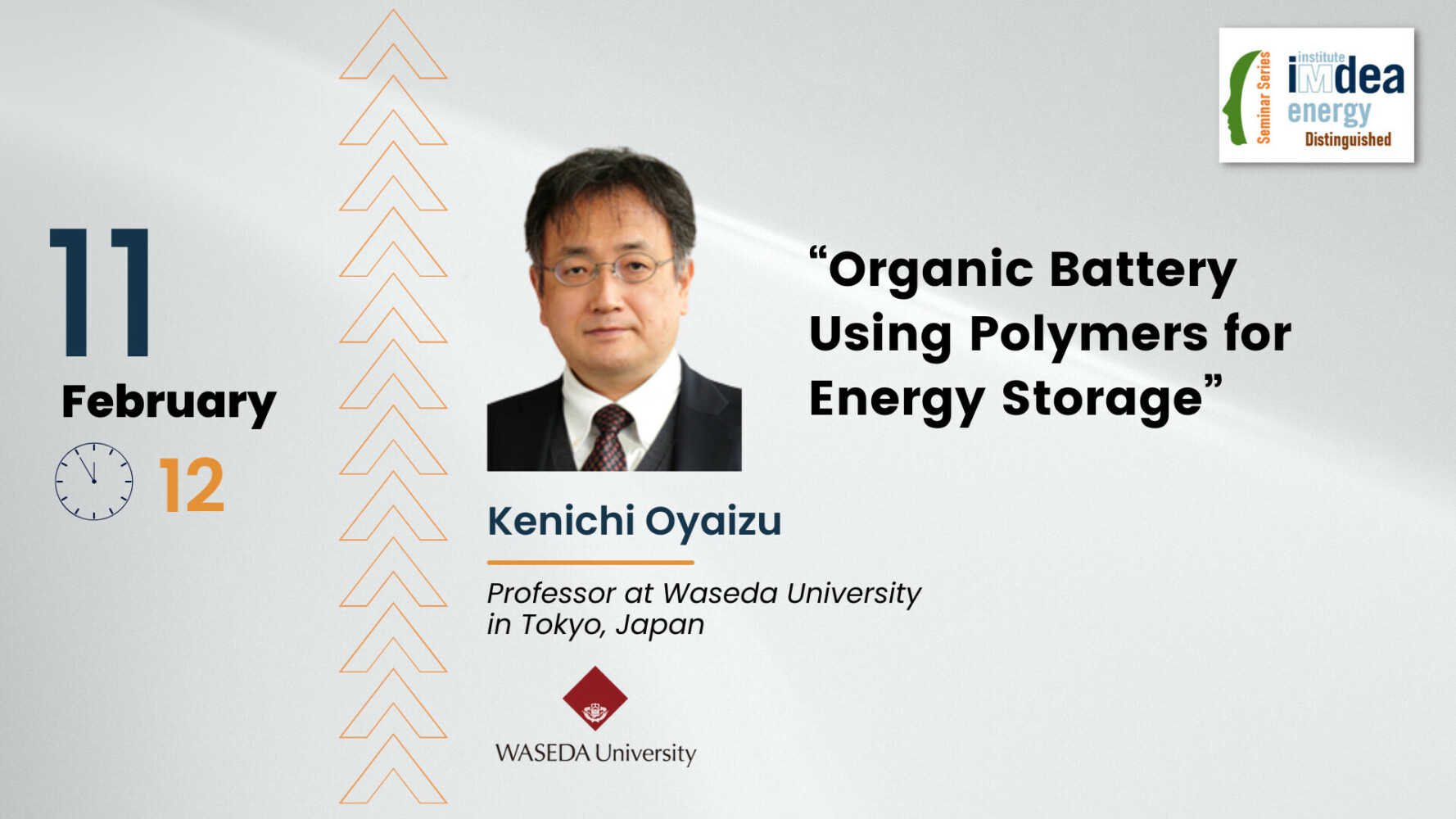Distinguished seminar: «Organic Battery Using Polymers for Energy Storage»

Short Bio
Kenichi Oyaizu is a professor at Waseda University in Tokyo, Japan. He received his Ph.D. in 1995. His research focuses on the development of functional polymers with an emphasis on energy-related materials and devices. He has been honored with the Mizuno Award at Waseda University in 1995, the Award for Encouragement of Research in Polymer Science from the Society of Polymer Science, Japan in 2001, the Chemical Society of Japan Award for Young Chemists in 2002, Prizes for Science and Technology, the Commendation for Science and Technology from the Minister of Education, Culture, Sports, Science and Technology, Japan in 2013, and the Award of the Society of Polymer Science, Japan in 2022.
Abstract
Organic Battery Using Polymers for Energy Storage
Organic high-density redox polymers, characterized by a large population of chemically robust and redox-active electron-releasing and -gaining sites, enable efficient redox gradient-driven transport and storage of electrons or charge across polymer layers via electron self-exchange reaction. Typically, the redox-active sites are quinones, viologens, imides, and robust organic radicals attached to non-conjugated backbones such as polymethacrylate, polyacrylamide, polyvinylether, polyether and polynorbornene. While these polymers do not exhibit electrical conductivity, they play an essential role in preventing crystallization of the redox active sites in the electrolyte media, maintaining the redox reactivity even at highly populated conditions within the polymer over their intrinsic solubility in electrolyte solutions. The redox-populated polymers give rise to large current density and areal capacity to enable rapid charge/discharge capability relevant for high-density energy storage with excellent cyclability in electrode performance, and are used as electrode-active materials in organic polymer batteries. Their application targets include high-power, flexible/stretchable and environmentally friendly energy storage devices.1, 2)
As one of the recent research trends in organic batteries, redox flow batteries (RFB) using the polymers as catholyte and/or anolyte are attracting much attention.3) In RFB, polymers are used as the flowing materials either as dissolved species or in nanoparticles dispersed in electrolyte solutions. Here, we report that polymer nanoparticle-based flowing electrolytes are advantageous in terms of crossover prevention with nanoporous separators and charge transport kinetics, as a result of the exchange-based mechanism within the nanoparticles.4)
References
1) K. Hatakeyama-Sato, K. Oyaizu, Chem. Rev. 2023, 123, 11336.
2) K. Oyaizu, Polym. J. 2024, 56, 127.
3) Hatakeyama-Sato, K. et al. RSC Adv. 2023, 13, 547.
4) Hatakeyama-Sato, K. et al. ACS Appl. Polym. Mater. 2019, 1, 188.
El evento está terminado.
Fecha
- Feb 11 2025
- ¡Caducado!
Hora
- 12:00 - 13:00
Localización
- IMDEA Energía


